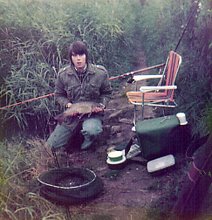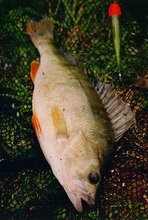Jellies - not the wobbly ones we had when we were kids - and what happened to them anyway? Do children these days still have jelly? What about Blancmange? Perhaps the jellies are still going, but as an adult I have moved on....lots of things are like that. Pogo sticks, roller skates and other dangerously innocuous children's toys that didn't hurt me when I was younger... I also heard that jellies aren't as nice as they used to be because of all the preservatives and other additions they are now laced with - sherbet lemons aren't the same either - The best jellies are those made with real fruit and not much else....
Anyway, I digress - how easy it is to go off on a tangent and allow ones thoughts to wander into areas not contemplated at the outset - oh oh.....
Jellies - not the wobbly ones but the preserves - are jams without the bits. This can be incredibly useful for quick preserving or for retaining the integrity of the taste without the texture which may not be required. Sometimes too, the fruit can be overly tough skinned (some plums, damsons, apples, gooseberries, currants), over pipped (raspberries, gooseberries) or stoned (apricots, peaches, plums etc.)
Jellies are also incredibly easy to produce.
This is a general recipe, for which only two real items of equipment are required - a large, good, robust pan and a jelly bag or muslin cloth. Jelly bags and stands are relatively cheap and available at most kitchen stores....like THIS ONE
There is also one absolutely useful tip that should not be ignored - but that comes later dear reader, so you must read on...
Another great thing about making jelly is that it happens in three distinct stages thereby not taking up a whole half day if you don't want to do it all in one - you can spread it over a day or two. You could even freeze the results after the second stage if you absolutely have to, if time constraints make finishing it all off difficult.
Stage One
Choosing your fruit needs to take into account the amount of pectin that fruit contains - it is the pectin that enables the jam to reach a setting point. Apples contain pectin and are therefore used in many jelly recipes - especially with soft fruits like blackberries, but any search on the net will determine the fruits which are high in pectin and those which are not, for example, orange flesh is low in pectin but the skin, pith and pips are high, so when we make marmalade we use the pips and pith during part of the process to extract the pectin required to give the jam its lovely jammy consistency.
Pectin added sugars are available and, of course, I use this in my Kelly's Chili Jelly recipe HERE This enables you to make pure fruit jams and jellies if you want to.
Pectin added sugars are available and, of course, I use this in my Kelly's Chili Jelly recipe HERE This enables you to make pure fruit jams and jellies if you want to.
However, once you have chosen your fruit just chop it up roughly (if necessary) and put it all in your large pan with around 600 mils of water per kilogramme of fruit and boil it all until it is soft.
Stage Two
Set up your jelly bag or muslin sheet and put all the fruit into it and allow it all to drip into a container large enough to take it about a litre and a half of liquid.
Now here is the one tip you must NOT ignore:
Do NOT squeeze the fruit, allow it to drip slowly, at its own pace. This way you will make a clear jelly, any pressure will result in a cloudy finished product. What we want is a sparklingly clean and clear final result so allow it to drip over night if possible.
Stage Three
Measure your clean, clear liquid and then pour it into your large pan again. Once it has begun to warm up add three quarters of the amount of your measured liquid and stir in until dissolved. So if you had one litre of fluid, add 750 grams of sugar. Liquid weights and solid weights are the same here so weight equals volume. If you have an odd amount add a little liquid to bring it up to an easy calculation. Simple.
Now bring it all to a rollicking, rolling boil and keep this going until setting point.
I have written about this before HERE.
Once it has set, pour it into sterilised jars as HERE
you can make jellies from most things but this time of year with so many apples around I make Herby apple jelly with Bramley apples and either rosemary, sage or thyme chopped very very finely and added late in the boling process. Having added a lot of the herb during stage one, the flavour is mostly there anyway, this final addition looks nice and adds some last minute flavour hits. Try it with any meat dish, in casseroles, curries, with mackerel and with cheese it's delicious.
Alternatively take a kilo of chopped apples, a kilo of blackberries and use the entire process above to make a wonderfully tangy jelly suitable for toast, sandwiches and scones....it is fun and it helps preserve summer for use in the winter....what could be better than a taste of summer days on a cold, wet January teatime?
Alternatively take a kilo of chopped apples, a kilo of blackberries and use the entire process above to make a wonderfully tangy jelly suitable for toast, sandwiches and scones....it is fun and it helps preserve summer for use in the winter....what could be better than a taste of summer days on a cold, wet January teatime?




